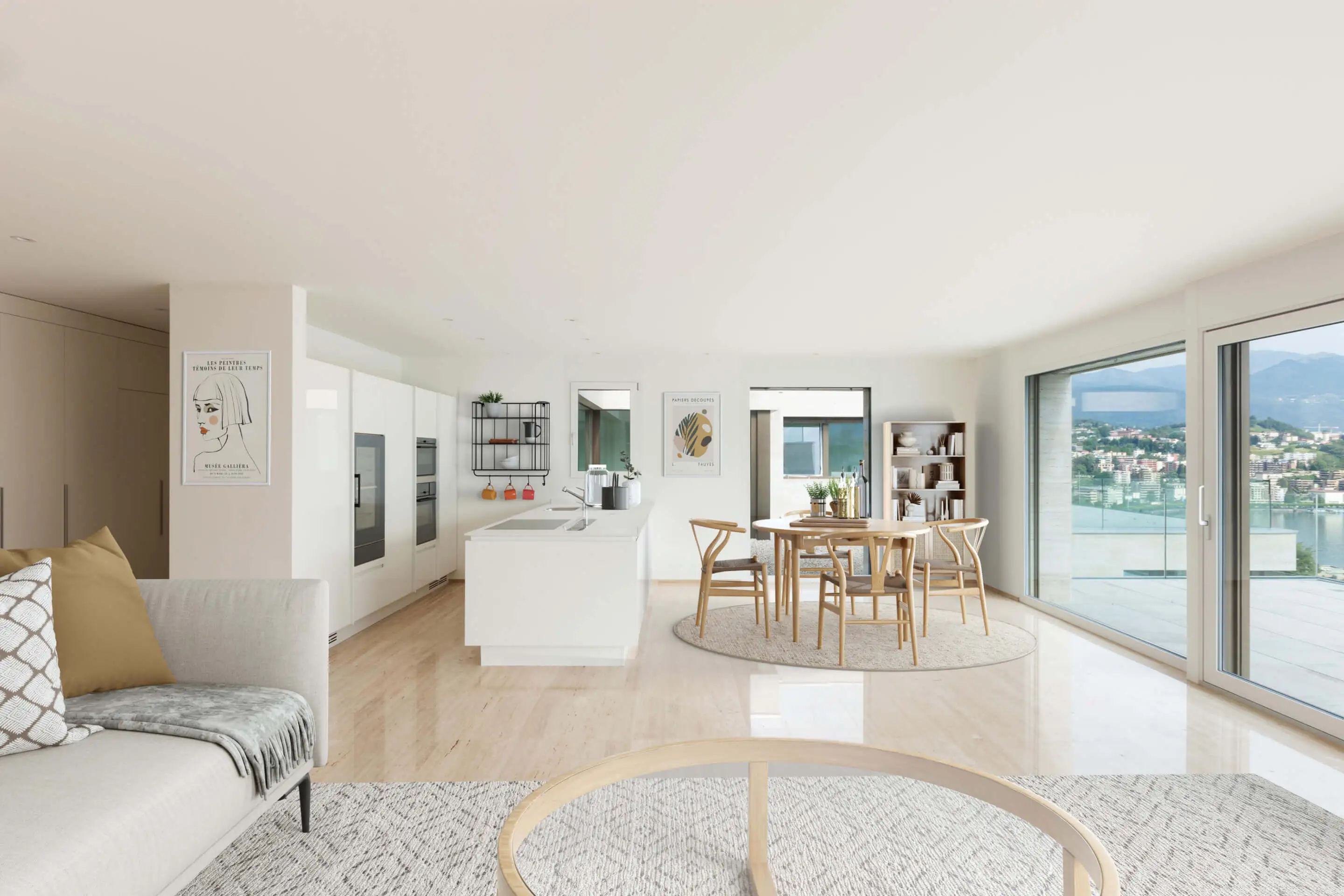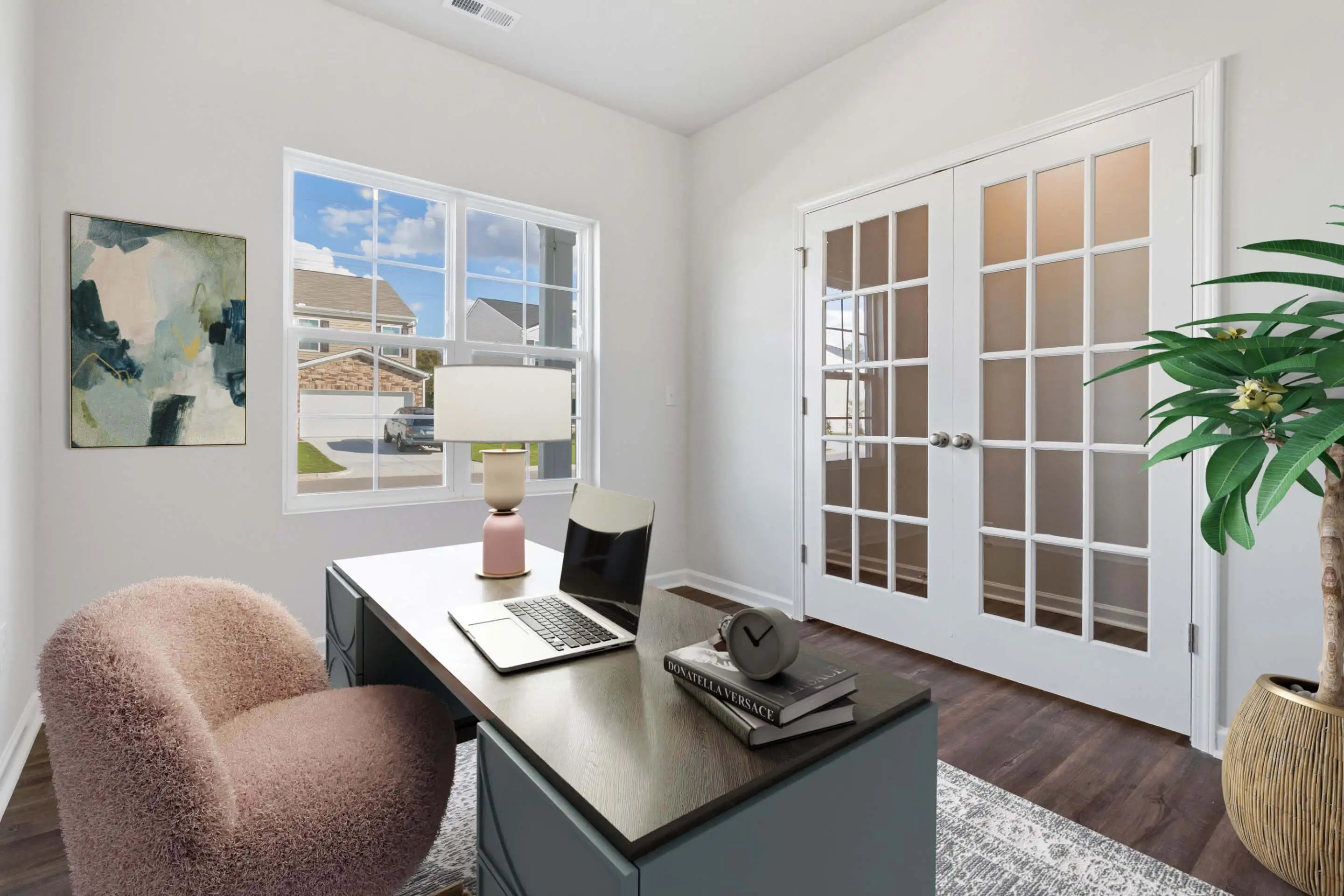Virtual staging has become one of the most transformative tools in modern real estate marketing. Empty rooms no longer need to rely on imagination - today’s digital tools let you visualize a fully furnished, beautifully styled home in minutes. Buyers can see the potential of a space instantly, and sellers gain a competitive edge with stronger first impressions and faster sales.
At Apply Design, we’ve seen first-hand how quickly the landscape of digital staging is evolving. New AI technologies, immersive 3D experiences, and integrated marketplace tools are reshaping what “home presentation” means online.
To help agents, photographers, and marketers navigate what’s next, we’ve rounded up the top five virtual and digital staging companies to watch in 2026. Naturally, Apply Design leads the list - but each company here brings a distinct strength or specialization that reflects where the industry is heading.
At Apply Design, we believe virtual staging should feel simple, intuitive, and creatively empowering. Our platform was built for speed and control: upload a photo, pick a style, and watch it transform instantly. Every image is editable right inside your browser - no downloads, no waiting for revisions.
Agents can restyle a room in different aesthetics, test which version performs better in listings, and make changes on the fly. It’s staging that moves at the same pace you do.
Why people choose Apply Design:
What started as a faster way to stage photos has become a creative platform for real estate marketing, interior visualization, and even brand storytelling. Whether you’re an individual agent or a national brokerage, Apply Design makes it easy to keep your listings visually consistent, professional, and current.
As 2026 approaches, our focus remains on expanding creative control - more furniture libraries, smarter AI tools, and deeper integration with listing platforms - so staging becomes an effortless extension of your marketing process.
If Apply Design reimagines staging as a fast, flexible workflow, RoOomy takes it into immersive territory. Their focus is on 3D and augmented reality, allowing buyers to move through virtually staged rooms or even “place” furnishings in real space using mobile devices.
It’s a niche approach, but one that’s gaining traction among developers and high-end real estate teams. Instead of static photos, RoOomy offers interactive visualizations that connect seamlessly with e-commerce catalogs from major furniture retailers.
What makes RoOomy stand out:
RoOomy’s strength lies in bridging real estate and retail - helping potential buyers not only imagine living in a home but also envision exactly how they’d furnish it. It’s less about fast-turnaround staging and more about creating an immersive digital showroom.
BoxBrownie is one of the longest-running and most recognizable names in the virtual staging space, and for good reason. Rather than leaning on automation, they rely on professional designers and editors to handle everything from photo touch-ups to full-room staging.
This makes BoxBrownie ideal for teams who prefer a managed, hands-off process. You send in your photos, choose your style, and receive fully staged, human-reviewed images - usually within 24 to 48 hours.
Highlights:
BoxBrownie represents the “classic” model of virtual staging: creative outsourcing with a personal touch. It may not have the immediacy of AI-driven tools like Apply Design, but it delivers excellent reliability and an aesthetic that feels curated.
For users who prefer to build scenes manually, VisualStager remains one of the best browser-based drag-and-drop staging tools available. It’s particularly appealing for photographers and agents who enjoy designing each layout themselves.
With an extensive furniture catalog, adjustable lighting, and simple perspective controls, VisualStager gives you the freedom to place every piece exactly how you want it - like digital interior design software, but faster.
Why it works:
While AI staging dominates the conversation today, there’s still a loyal audience for tools like VisualStager - especially when artistic input matters more than automation. It’s slower, yes, but it gives you complete authorship over the final image.
The fifth spot goes to Zillow’s Virtual Staging for Showcase listings, which represents a new direction for the industry: staging built directly into the marketplace. Instead of uploading staged photos separately, agents can apply virtual furnishings as part of the listing creation process.
This integration reduces friction - no exporting, no emailing files, and no external vendor management. It’s still in early stages, but the potential is huge.
Key advantages:
While the customization options are currently limited compared to standalone tools, this approach points to where the market may be heading: seamless, platform-native staging that becomes as routine as uploading photos.
Virtual staging has come a long way from static Photoshop composites. In just a few years, the technology has evolved from outsourced image editing to real-time creative visualization. Today, AI can generate photorealistic rooms in seconds, and 3D engines can simulate natural lighting and material texture with stunning accuracy.
But what hasn’t changed is the goal: to help buyers connect emotionally with a space. A staged image still needs to feel human, balanced, and aspirational - not just “AI-generated.” That’s where the best tools distinguish themselves.
Platforms like Apply Design blend automation with artistic control, ensuring you can generate images quickly without losing creative intent. It’s this mix of speed, realism, and flexibility that defines the next generation of staging tools.
Looking ahead, we expect to see:
What sets Apply Design apart isn’t just technology - it’s the focus on usability and creative empowerment. We’ve built a platform where anyone, regardless of design background, can produce beautiful, professional staging in minutes.
You don’t need to outsource. You don’t need to wait. You just upload, restyle, and publish.
That immediacy means agents can respond to shifting markets faster - updating photos after a renovation, refreshing an old listing, or tailoring visuals for new demographics. It’s staging that moves at the speed of marketing.
We also care deeply about design quality. Our furniture collections are built by professionals, our lighting simulation is realistic, and our user interface is designed to feel like a creative tool, not a form submission page. The result: staged photos that genuinely look like homes someone could live in, not renders that break the illusion.
As virtual staging becomes more common, differentiation will come from execution - how fast, how consistent, how lifelike. That’s where Apply Design continues to lead.
Virtual staging has moved from niche to necessity. Whether you’re marketing a single condo or a national portfolio, staged photos are now table stakes for online listings. The good news is that the tools have never been faster, more flexible, or more accessible.
If you’re ready to modernize your workflow in 2026, start with Apply Design. It gives you the power to stage, edit, and publish with the speed of AI and the precision of human design - all inside your browser.
And if you’re curious about what’s happening across the wider landscape, explore the others on this list. Each one offers a glimpse into a different direction the industry is heading: immersive experiences, managed services, creative DIY, or seamless integration.
Whichever route you choose, the goal is the same - help buyers see what a home could be.




